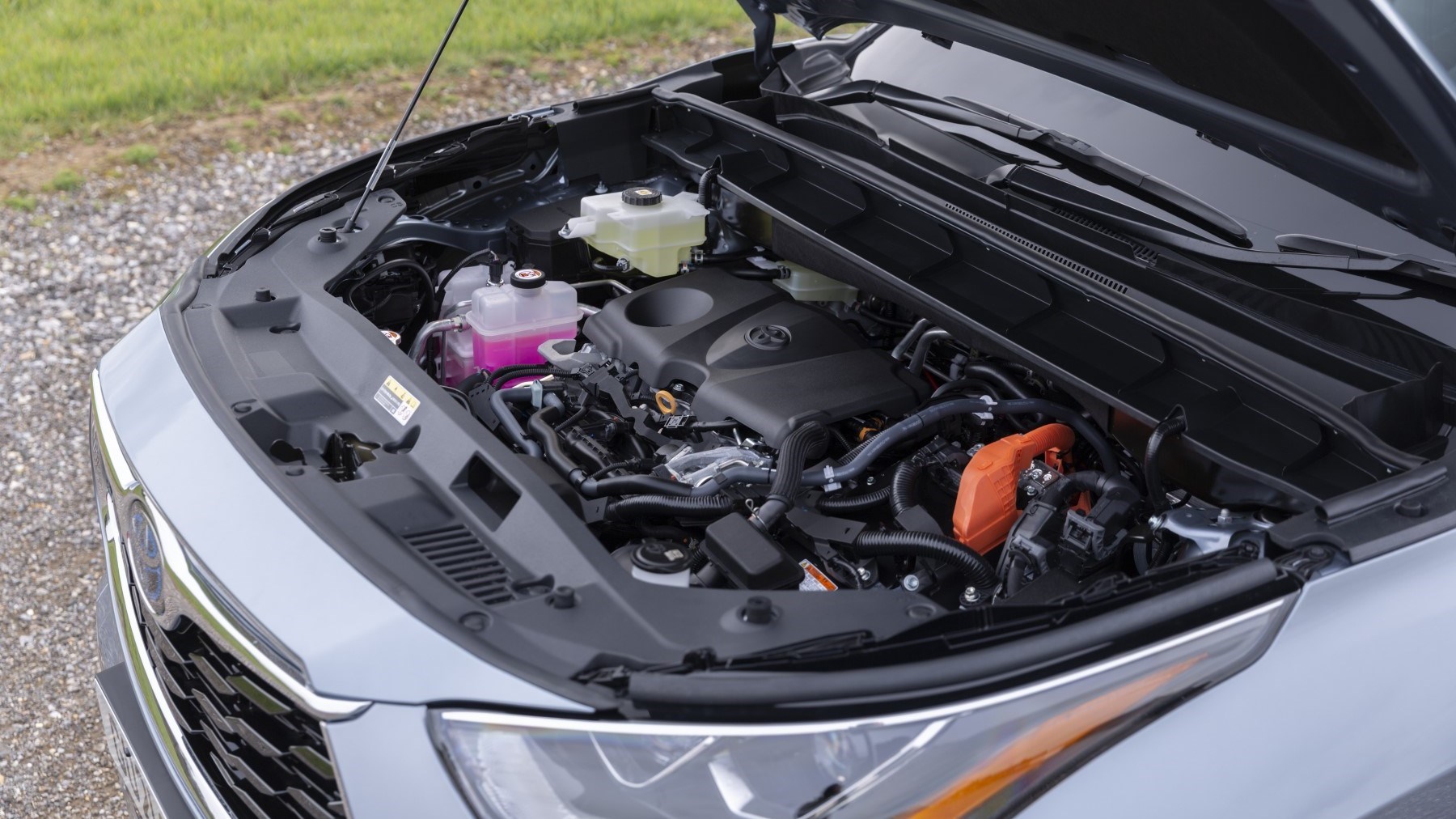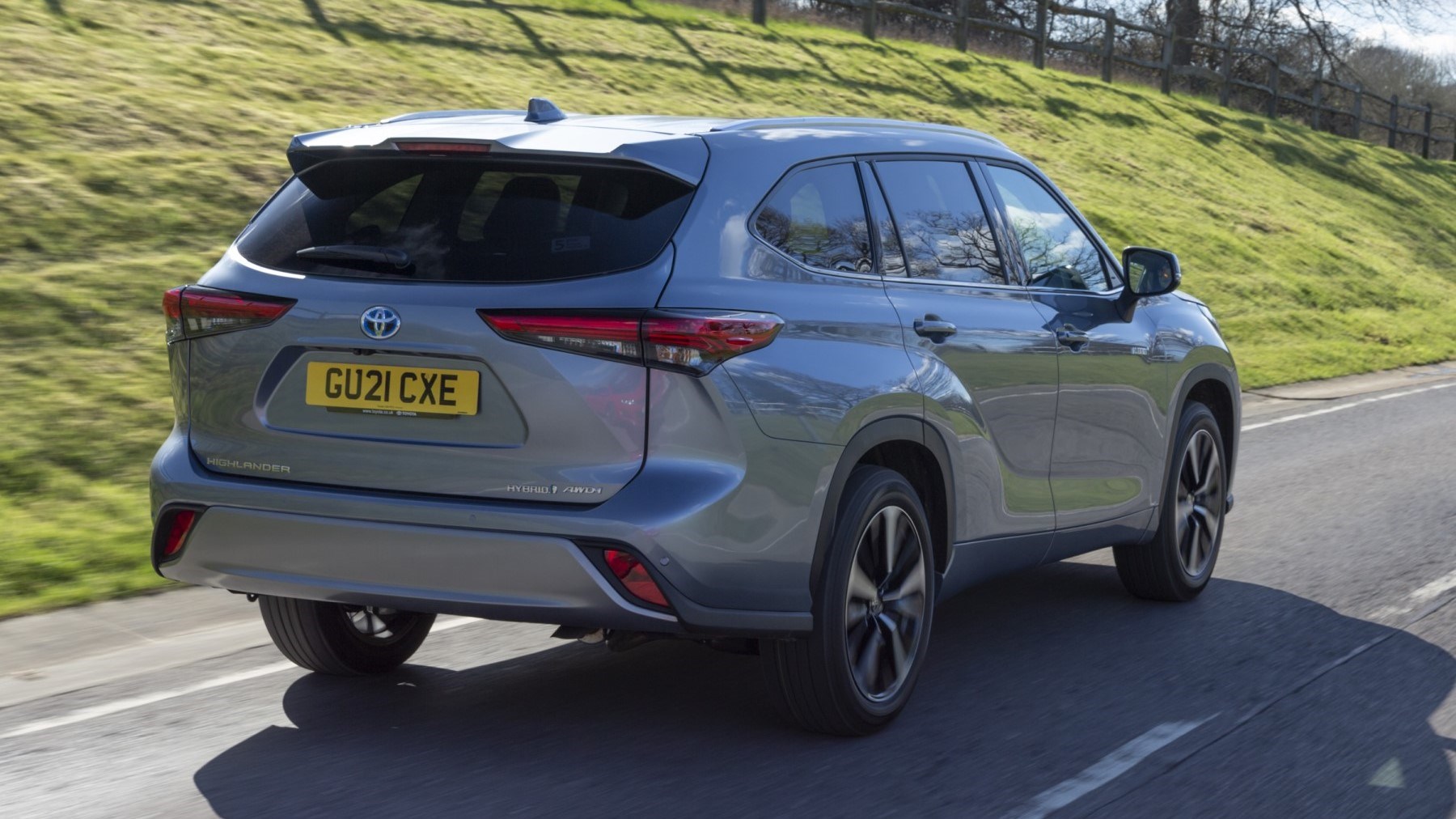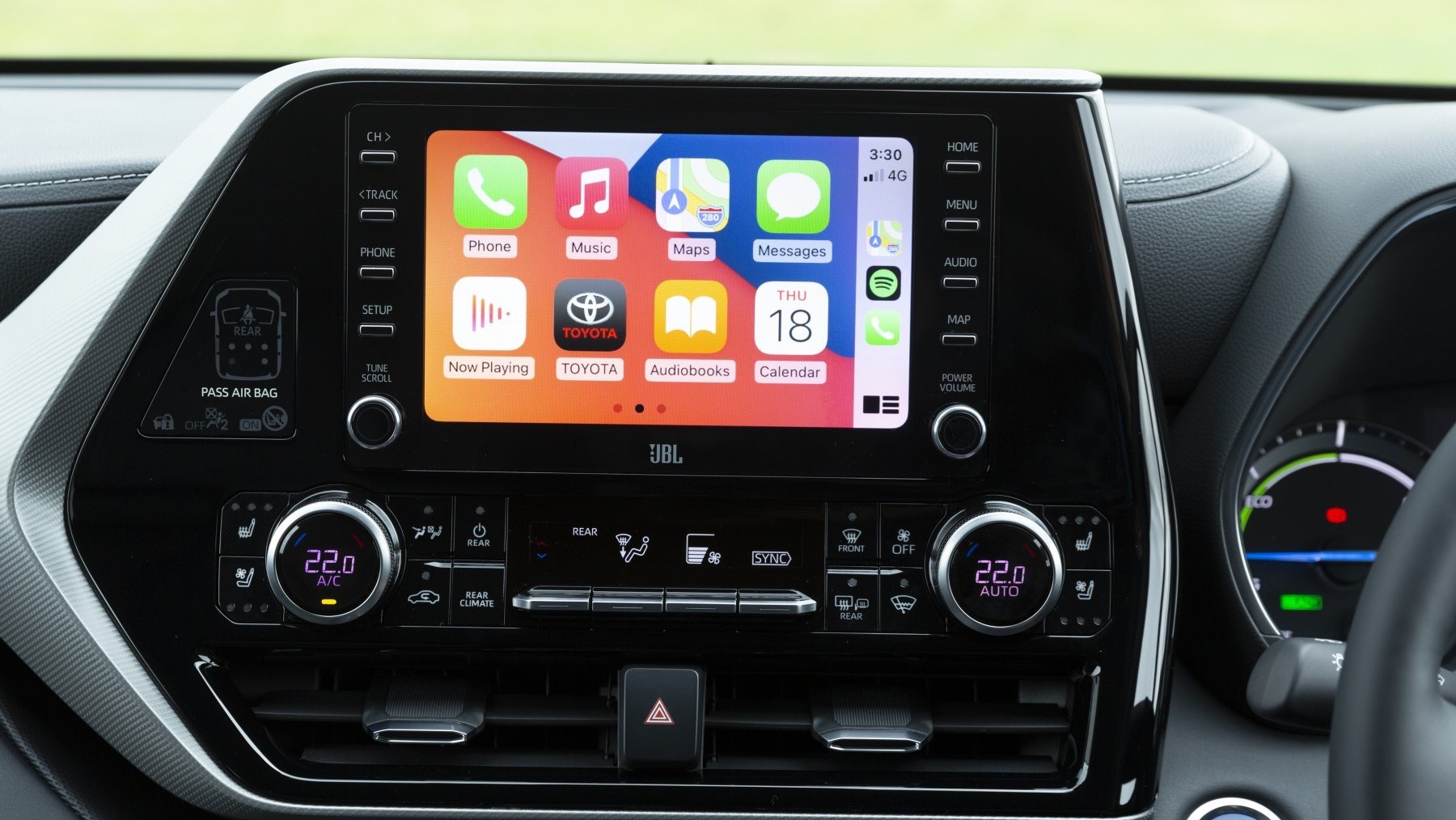► New Highlander on sale in the UK
► Hybrid SUV rivals Sorento, XC90
► Seven seats standard, up to 39.7mpg
This is the Toyota Highlander, which if you’re reading this review from Japan, the USA or Russia you may already be familiar with. It’s Toyota’s large-SUV-that-isn’t-a-Land Cruiser, with seven seats but more of an on-road focus – and now, this fourth-generation model is available in Western Europe and the UK.
Over here, the Highlander sits comfortably between the smaller RAV4 (with which it shares its GA-K platform) and the big daddy Land Cruiser. This puts it toe-to-toe with some very strong, family-friendly competition, including the Skoda Kodiaq, Kia Sorento, Land Rover Discovery and Volvo XC90. There’s even competition from within Toyota – the Lexus RX L, which is more powerful and luxurious but higher-priced than the Highlander.
We lived with a Lexus RX L – read our report here
Toyota’s hoping a standard hybrid powertrain (bringing with it low running costs), generous standard kit and a satisfyingly practical interior will do the trick.
About that hybrid engine…
It’s the latest evolution of Toyota’s 2.5-litre hybrid and it’s seriously good. There, we said it.
There’s not even much of a ‘but…’ applied to this. The last two decades of development mean the Highlander’s 2.5-litre is impressive under nearly all driving scenarios. It’s the most powerful ‘self-charging’ hybrid fitted to a Toyota yet with 244bhp (the RAV4 plug-in hybrid is a little more powerful) and claims 0-62mph in 8.3 seconds.

That extra power is a real boon, as it means you don’t need to strain the engine too hard to get a shift on. Pulling away is smooth and rapid, and shuffling between petrol and electric is near-seamless. There’s none of that diesel rumble, and at a fast cruise the Highlander settles down to near-silence – even with only modest wind and road noise, the engine’s easily drowned out.
The transmission is a CVT auto, and the usual caveats regarding spirited driving apply: if you put the boot in, the Highlander tends to rev up to the nines and stay there. Truly, though, is this any less pleasant than pressing on in an automatic diesel car? We’re not too sure it is.
Other hybrid benefits are obvious. This is a self-charger and not a plug-in, meaning you won’t find any 200+mpg figures bandied about. But Toyota claims up to 39.7mpg on the combined cycle, and over a long, mixed test route we bested this with an indicated 41.3mpg. That’s diesel-like economy, but unlike diesel there’s little penalty for doing shorter trips – no long warm-up and fewer complex emissions systems to clog.
The best hybrid and PHEV cars
Toyota didn’t discount the possibility of a PHEV Highlander in future – it rides on the same underlying architecture as the RAV4 plug-in, after all – but given this would probably mean losing the two rearmost seats to battery storage it seems unlikely.
What’s it like to drive?
The Highlander handles like a big RAV4. It majors on comfort over handling, and does so quite well – though the ride isn’t quite as pillowy soft as something like a Discovery, it deals effectively with all but the largest potholes.

The Highlander resists bodyroll surprisingly well for such a big car, but with lightweight steering that’s totally devoid of communication you won’t feel encouraged to press on. When cruising or taking things a bit more gently, its relaxed gait and excellent refinement can shine.
What’s it like inside?
It’s very RAV4-esque in here, which is good and bad. First the good – build quality is up to Toyota’s usual high standards and, for the most part, so is usability. Most functions are totally idiot-proof, with switches where you want them, and the temptation to add in daft items like touch-sensitive climate controls or uncomfortably unconventional gear selectors has been resisted.
It’s comfortable, too, with wide, squashy seats and plenty of adjustment. Occupants in the first two rows enjoy plenty of space for lounging about. The third row is tighter – adults will only be comfortable for short trips, and you’ll need to balance that with the sliding second row to avoid any accidental amputations. A Discovery is a better seven-seater, but the Highlander’s on par with the Skoda Kodiaq or Kia Sorento in this regard – so not too bad.

Boot capacity is limited with all the seats in place, but capacious with one or two rows folded – and the seatbacks lie nice and flat. There’s plenty of storage for odds and ends too, including smartphone-sized pockets in all four doors and an interesting sliding centre armrest.
It’s rather plain in here, though. Surfaces are unrelentingly black and there’s nothing to surprise or delight – even the dials are analogue.
The infotainment deserves a mention too, and not on the positive side. It’s the same system fitted to most current Toyotas, and it’s hugely behind rivals in terms of attractiveness and usability.

On a Corolla it’s irritating, but on a £50,000+ SUV it feels like a real letdown – especially when rivals such as the Discovery and Sorento both enjoy big, clear and responsive systems. At least Toyota now includes Apple CarPlay and Android Auto as standard equipment, allowing you to bypass its own interface. And unlike Lexuses (Lexii?) you can at least interact via touchscreen, instead of touchpad…
Verdict
The Toyota Highlander is not an exciting car. It’s so anonymous that we forgot what the exterior looked like while we were driving, and its focus on comfort and running costs don’t exactly set the pulse racing.
It is spectacularly fit for purpose, however. It’s comfortable to drive, with remarkable refinement, impressive economy and plenty of space. It seems like a smart addition to Toyota’s range, too – offering those who want to stay with the brand a seven-seater that’s cleaner, greener and less agricultural than the diesel Land Cruiser, and cheaper than the Lexus RX L.
Keen drivers and tech nerds look elsewhere, and there’s better value to be found in an entry-level Skoda Kodiaq or Kia Sorento. But the Highlander’s well worth a look if you want a car that’s roomy, refined, efficient and well-equipped, with the promise of painless ownership.